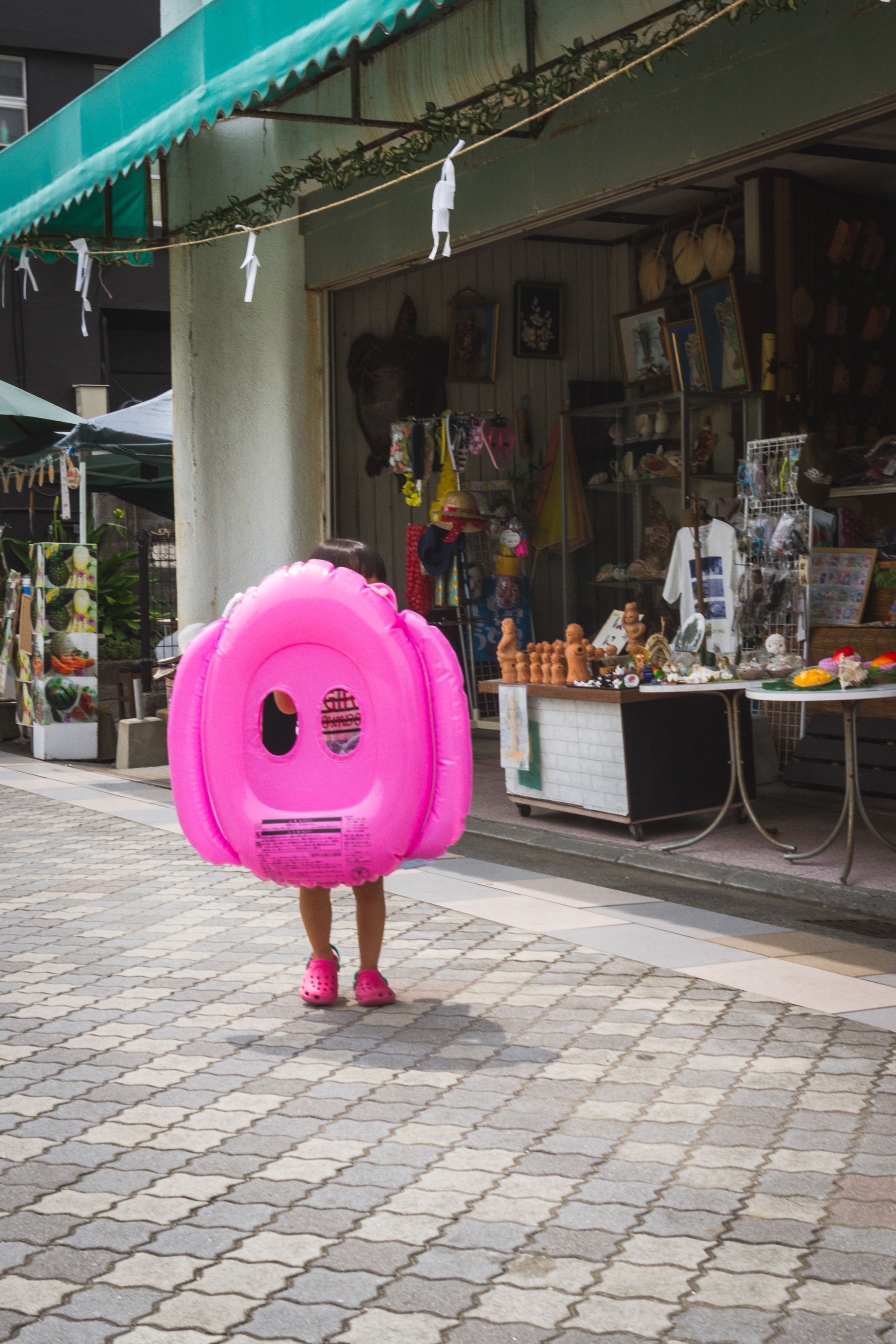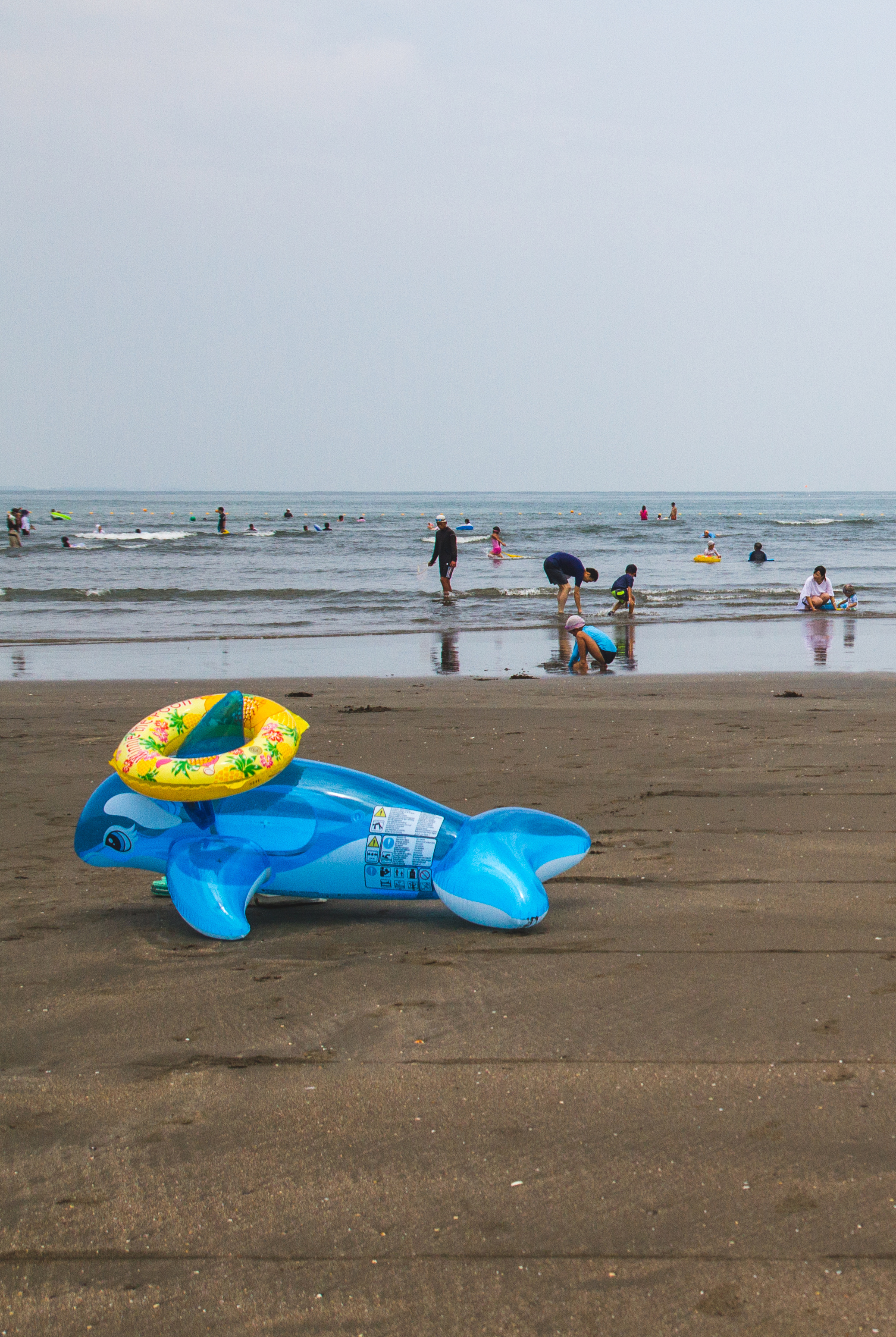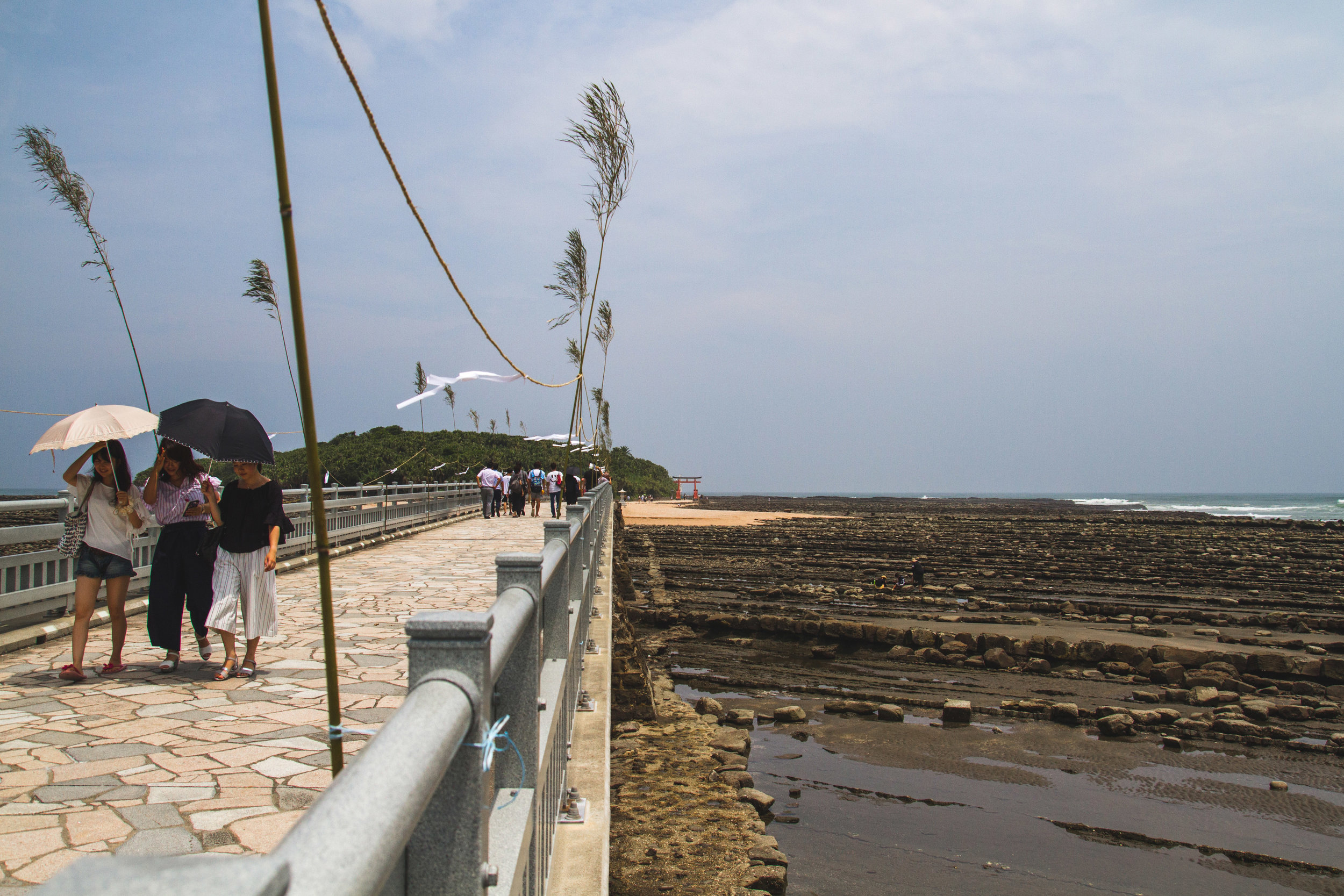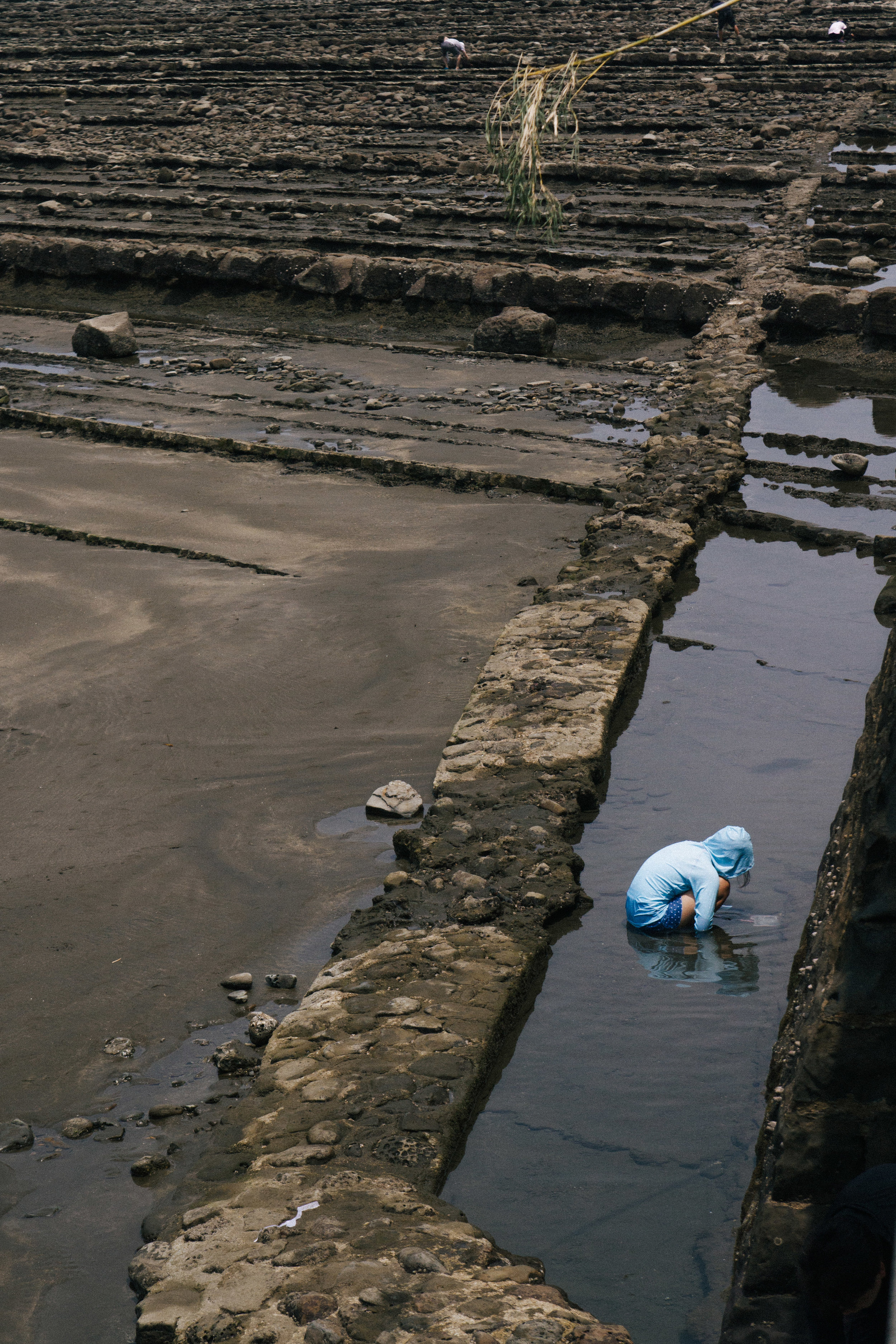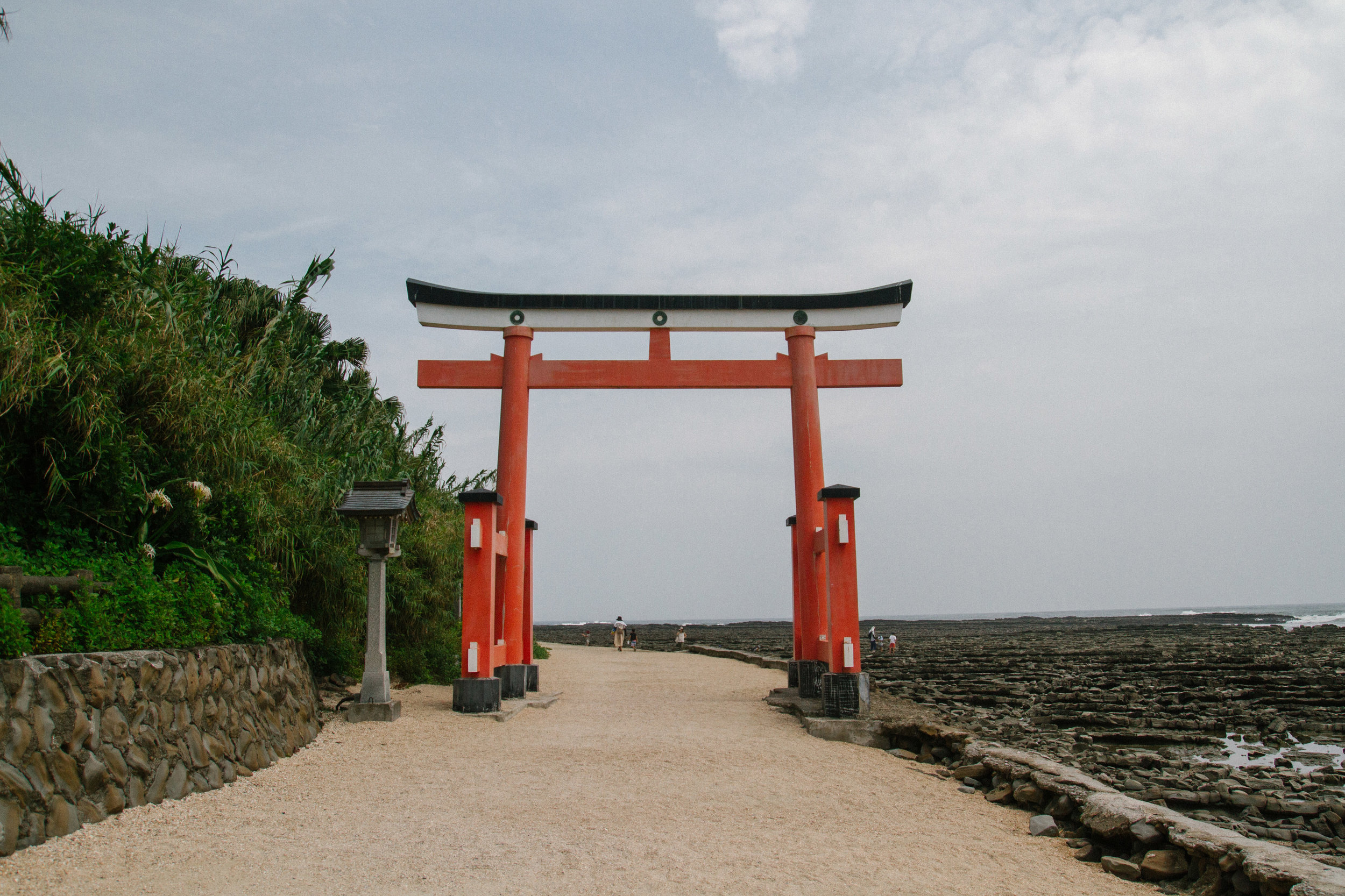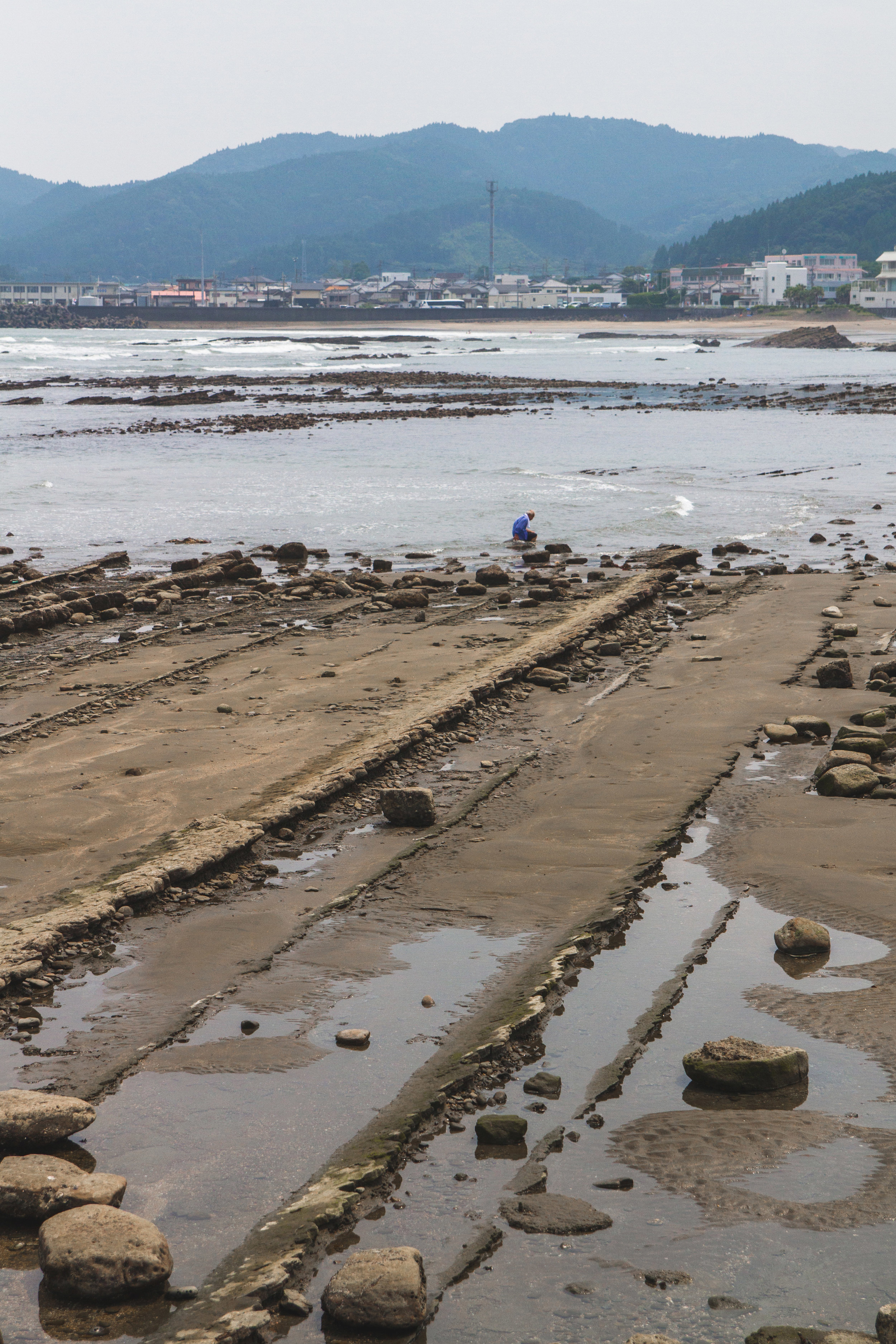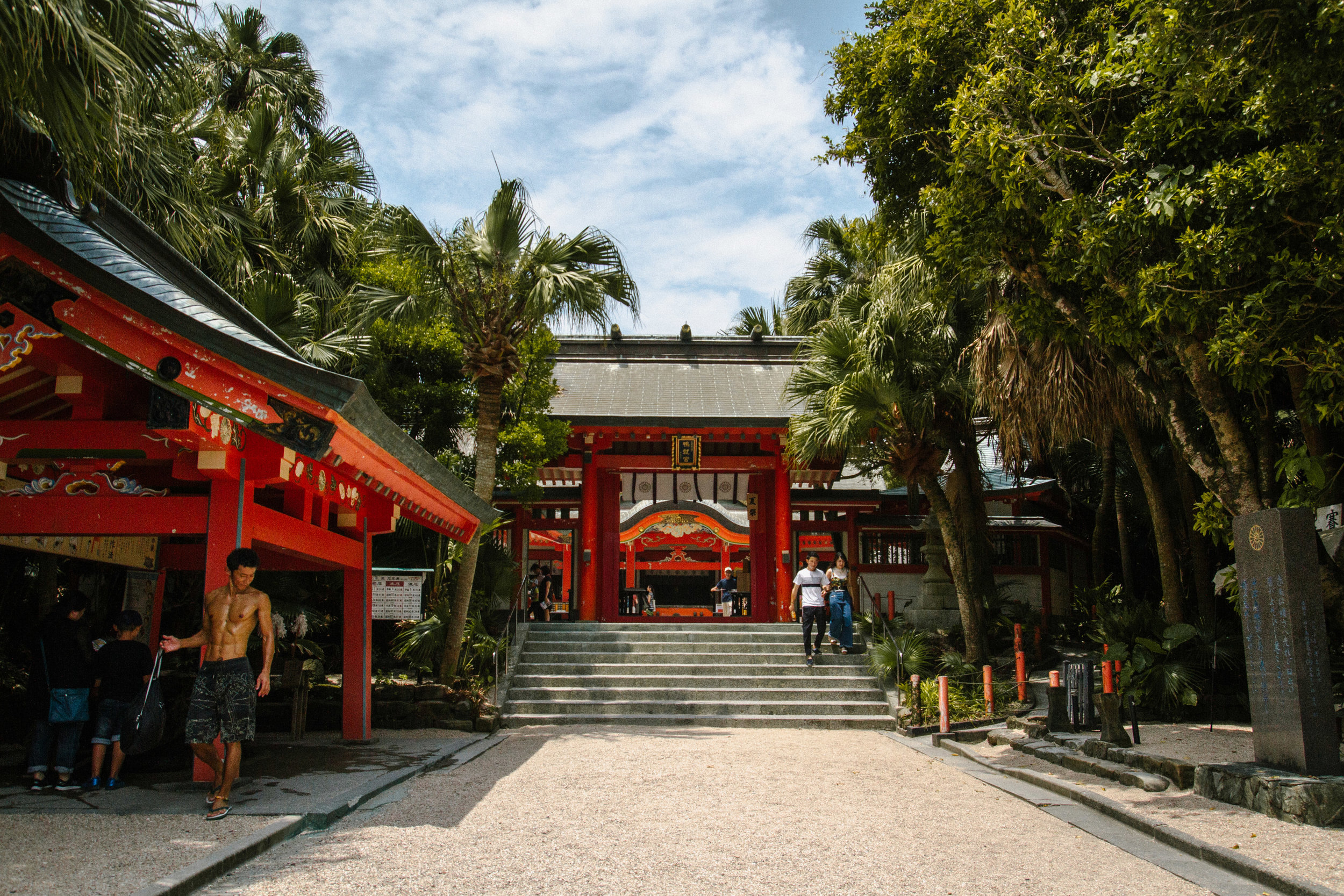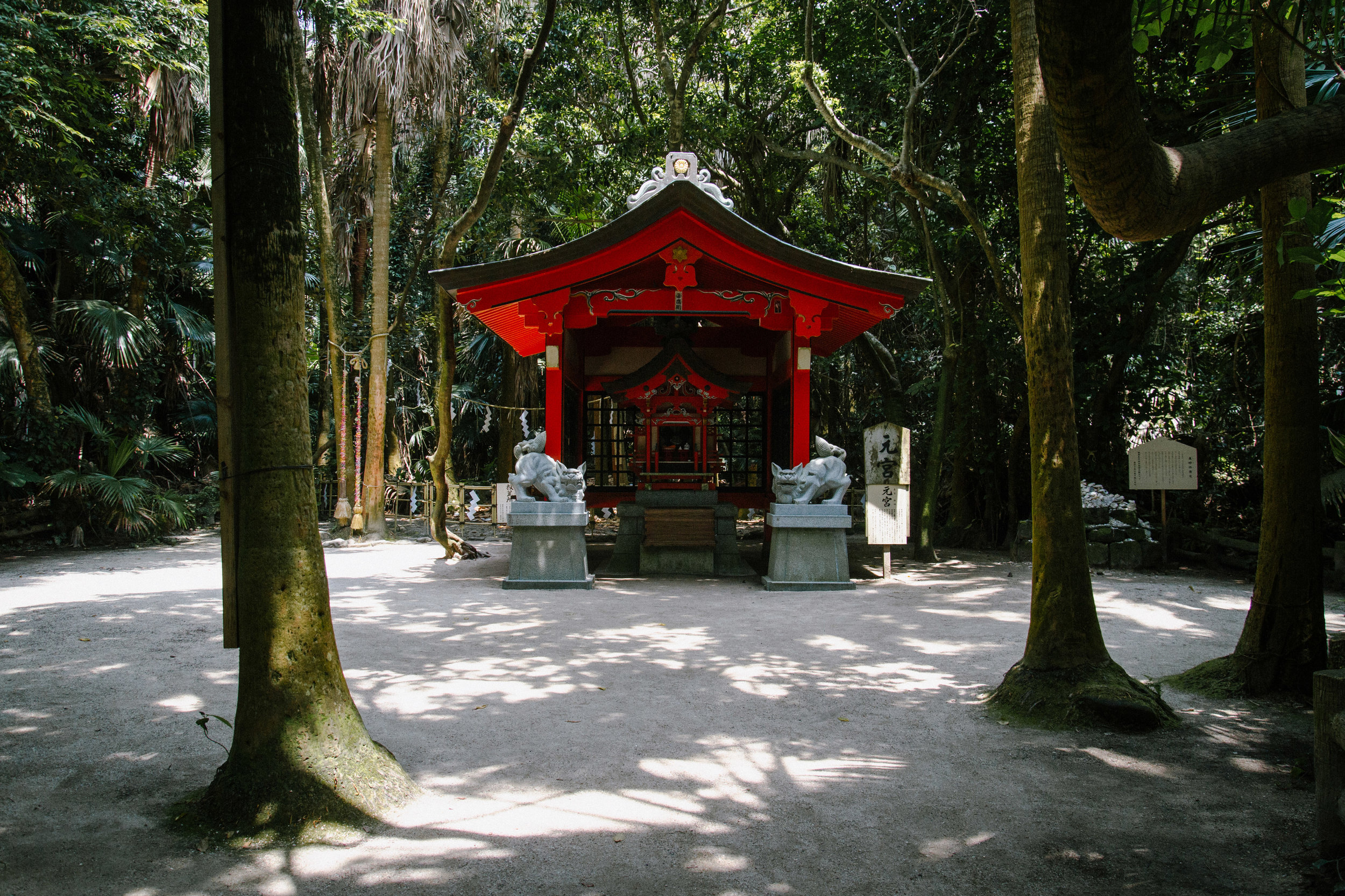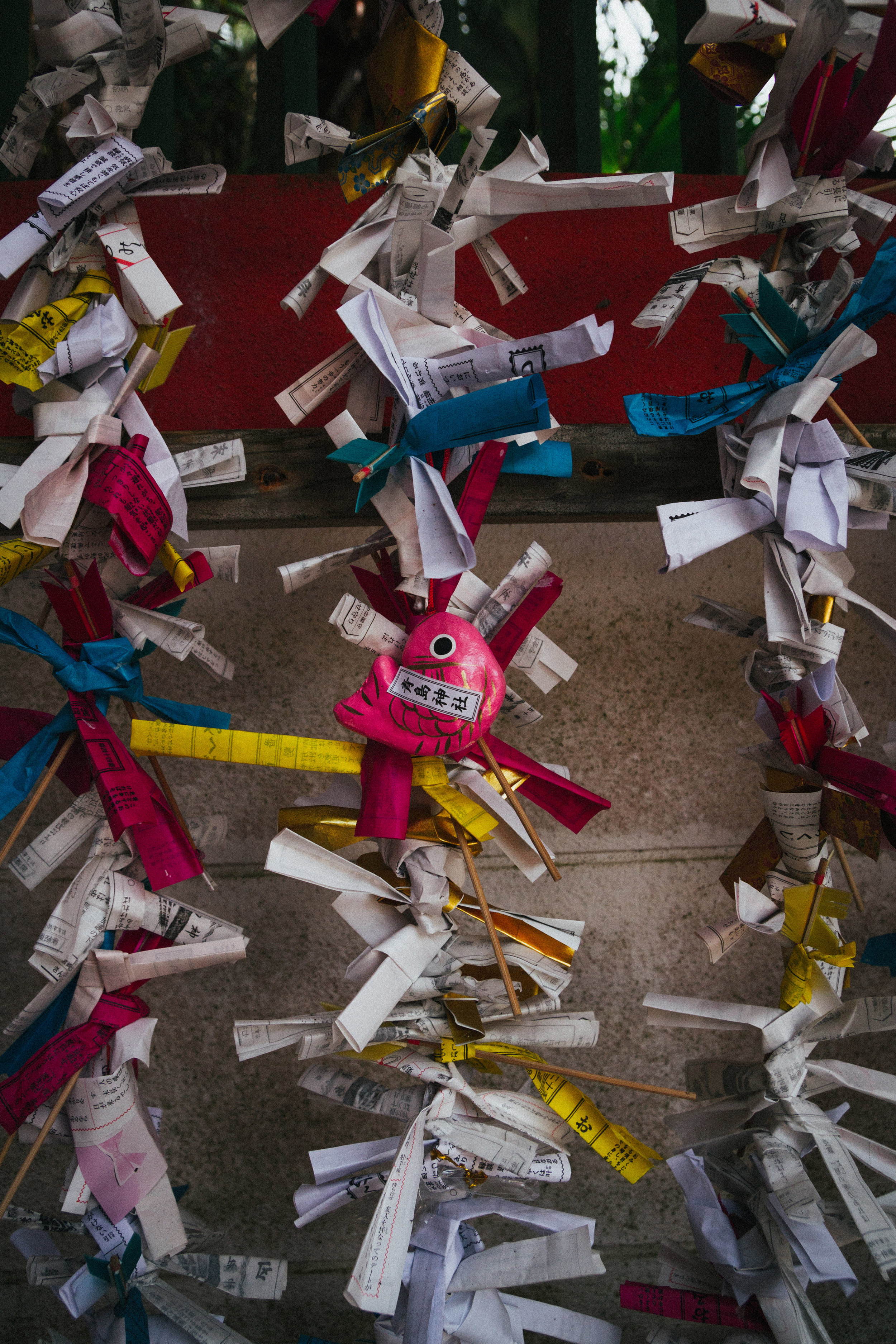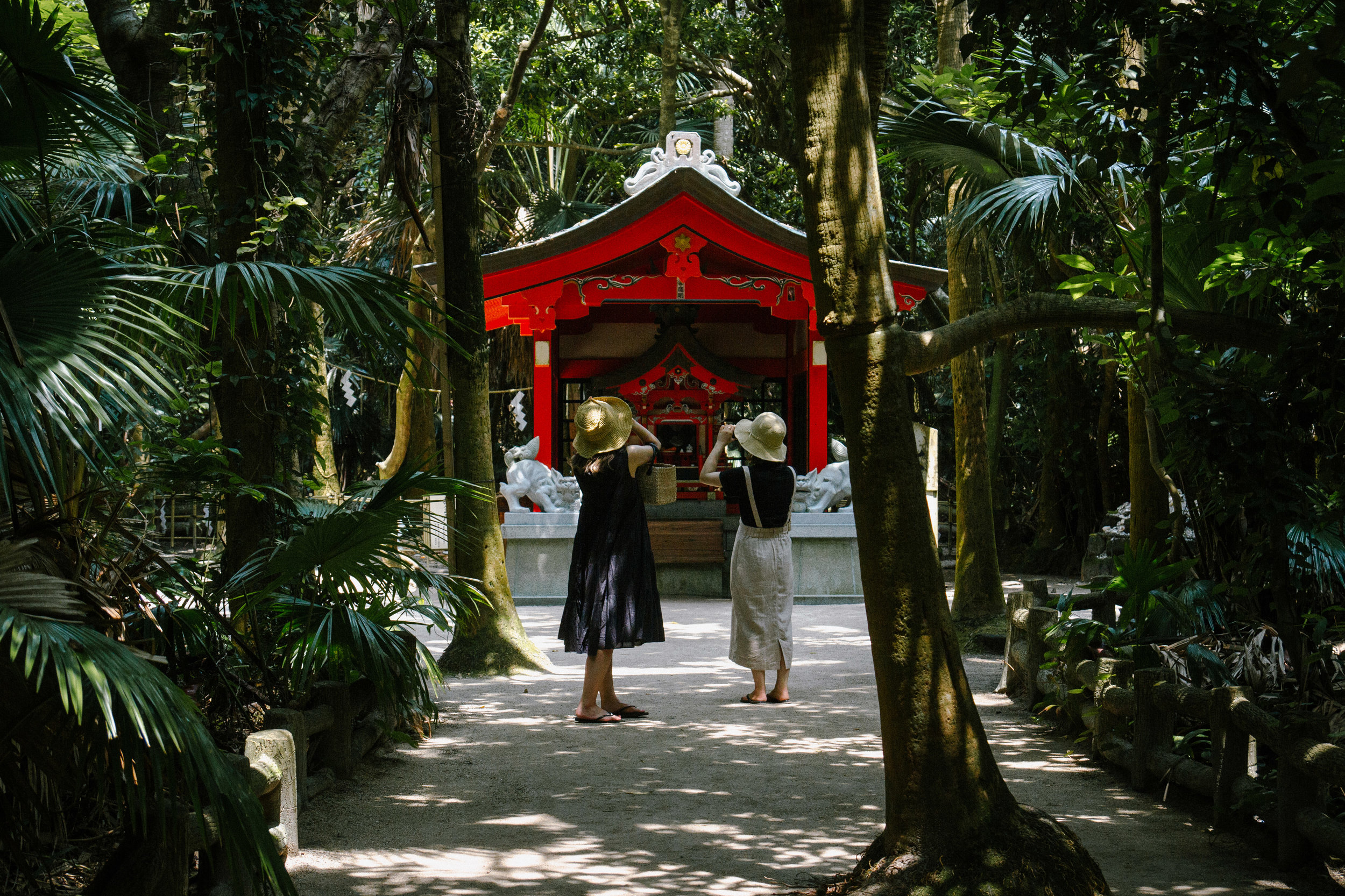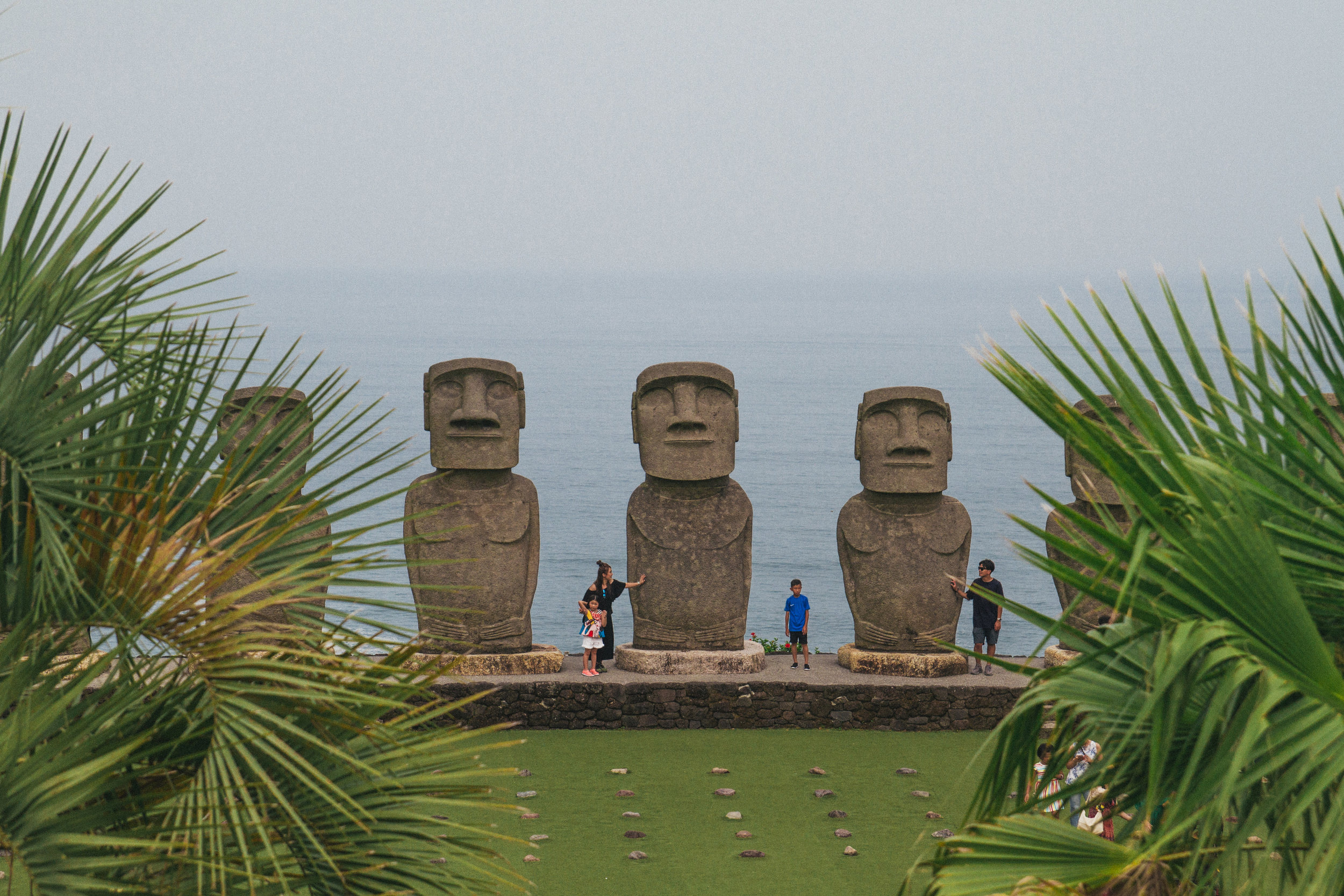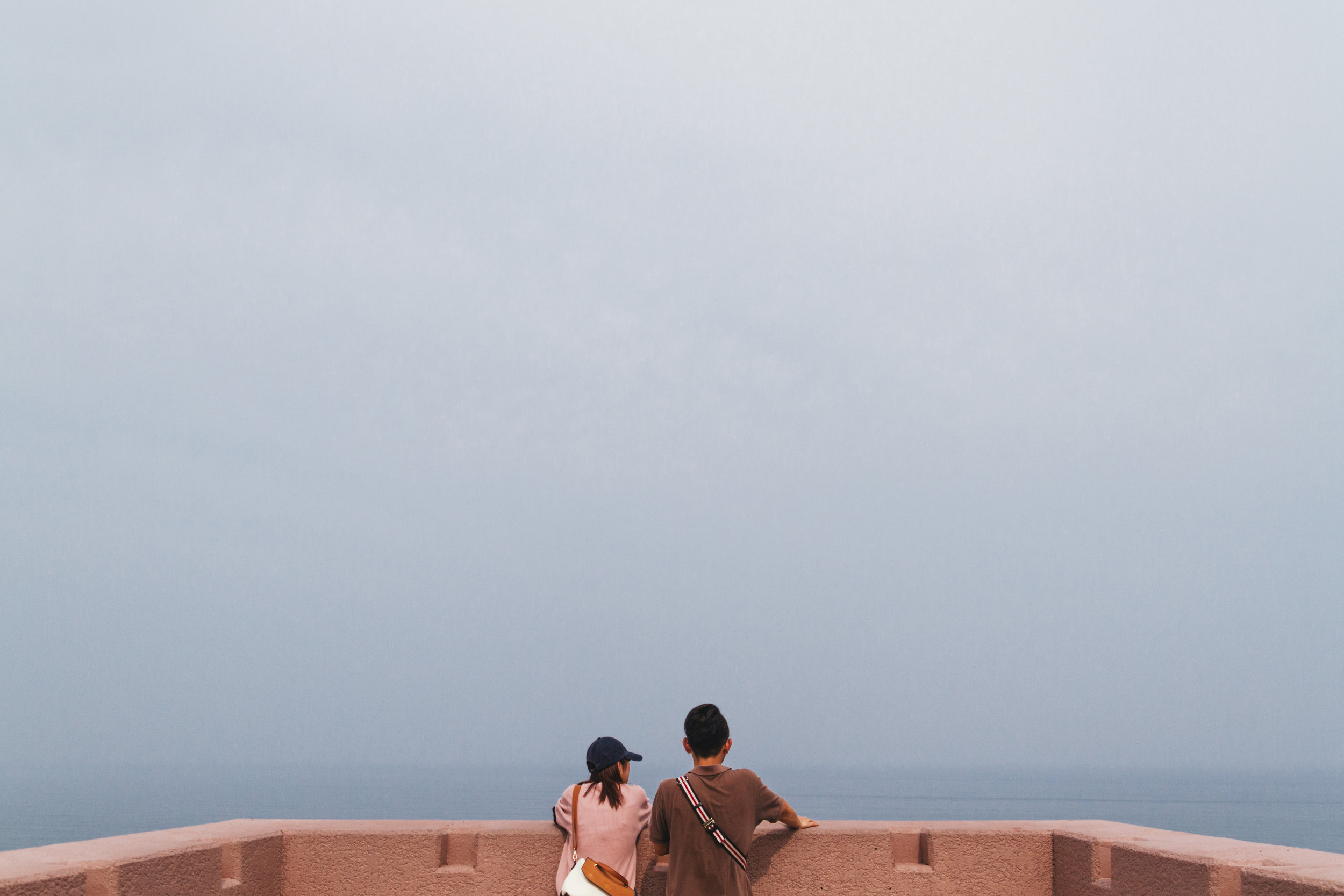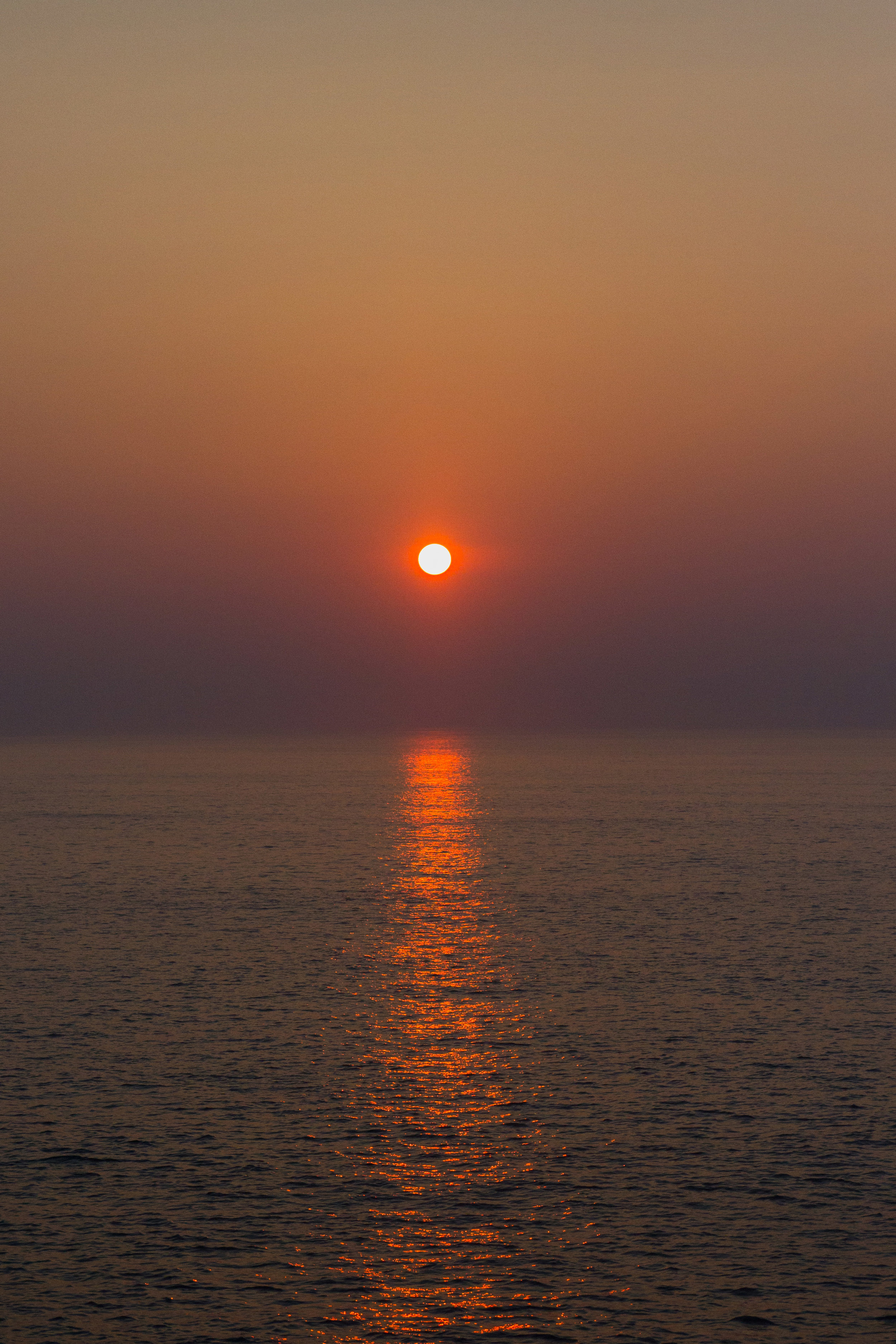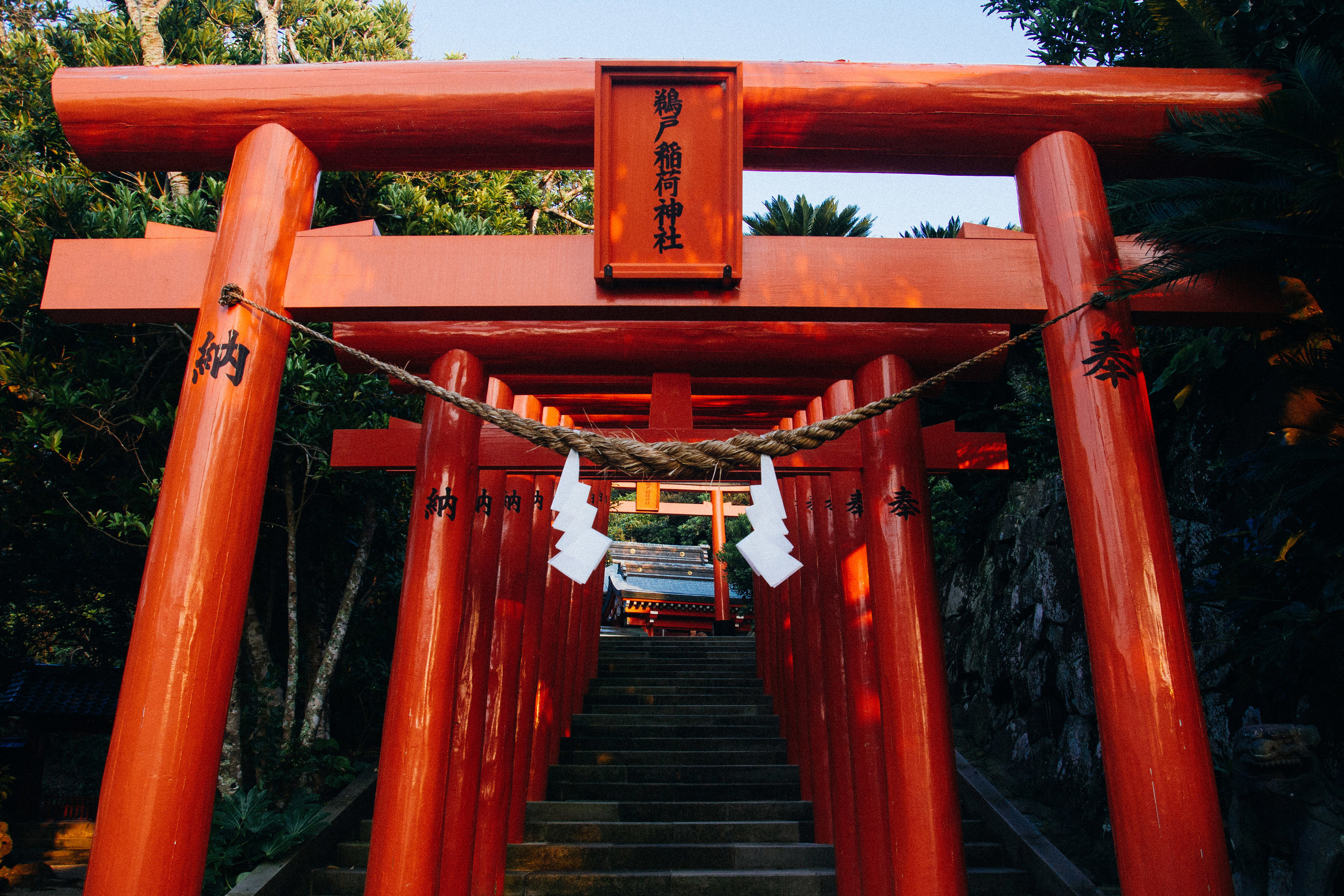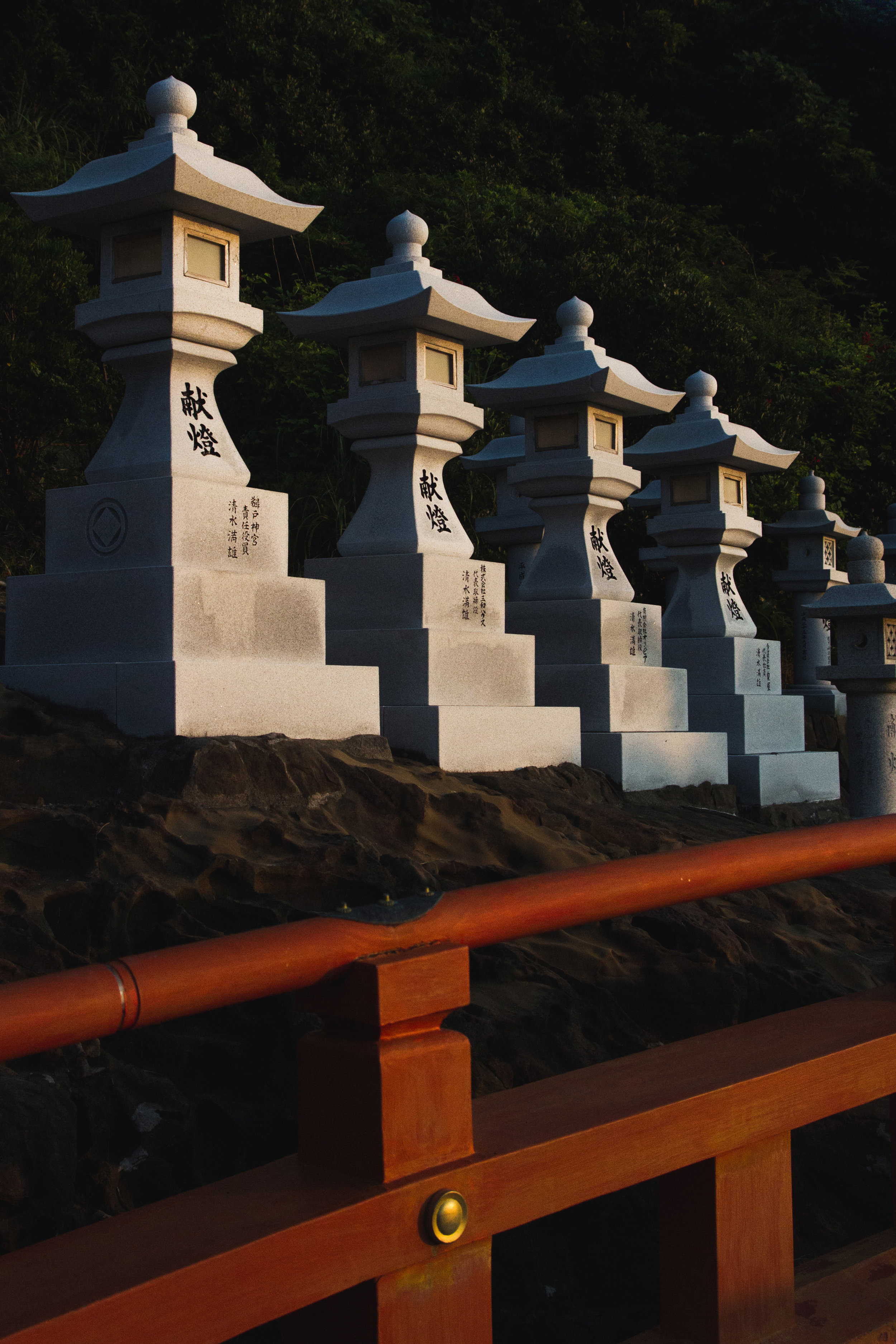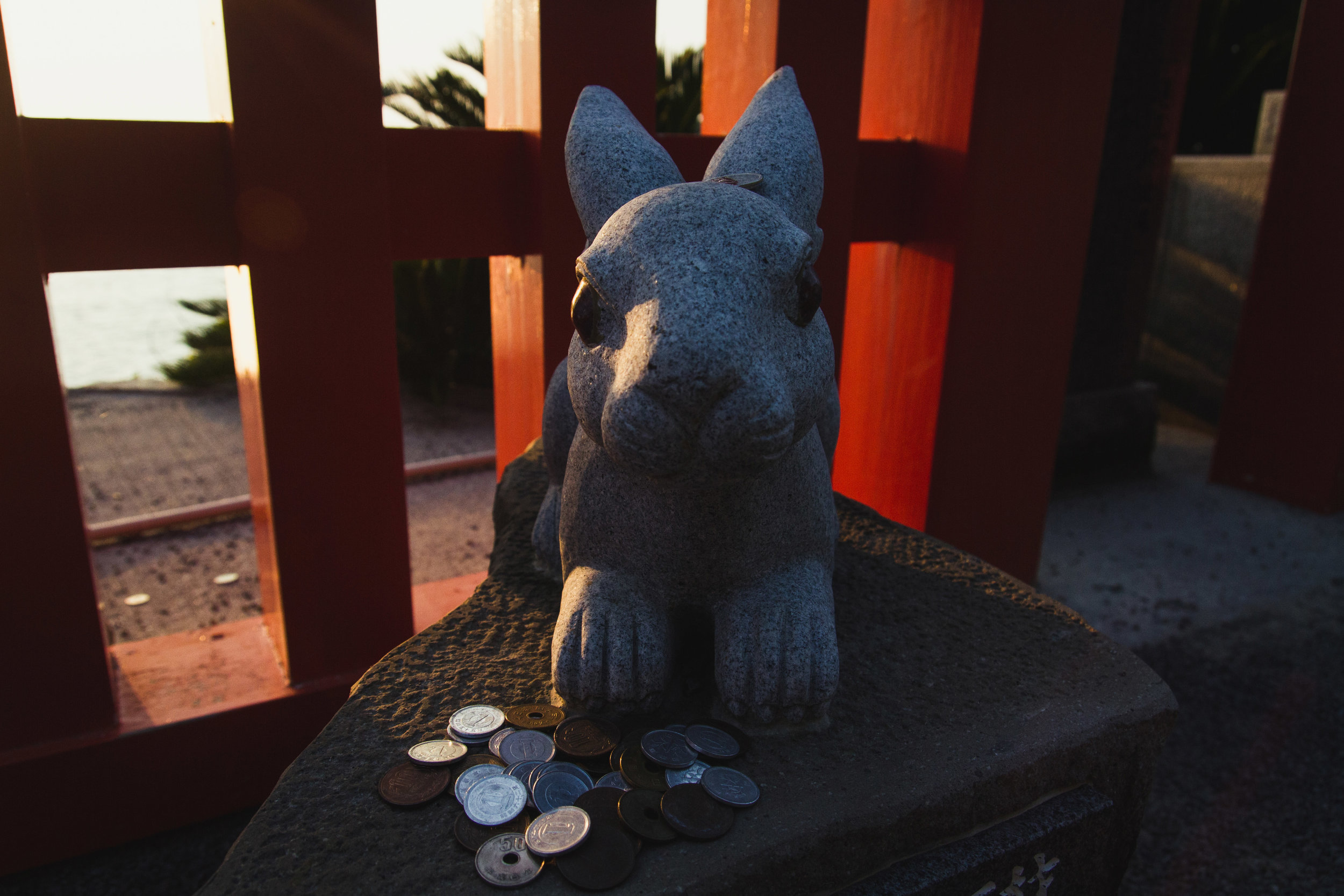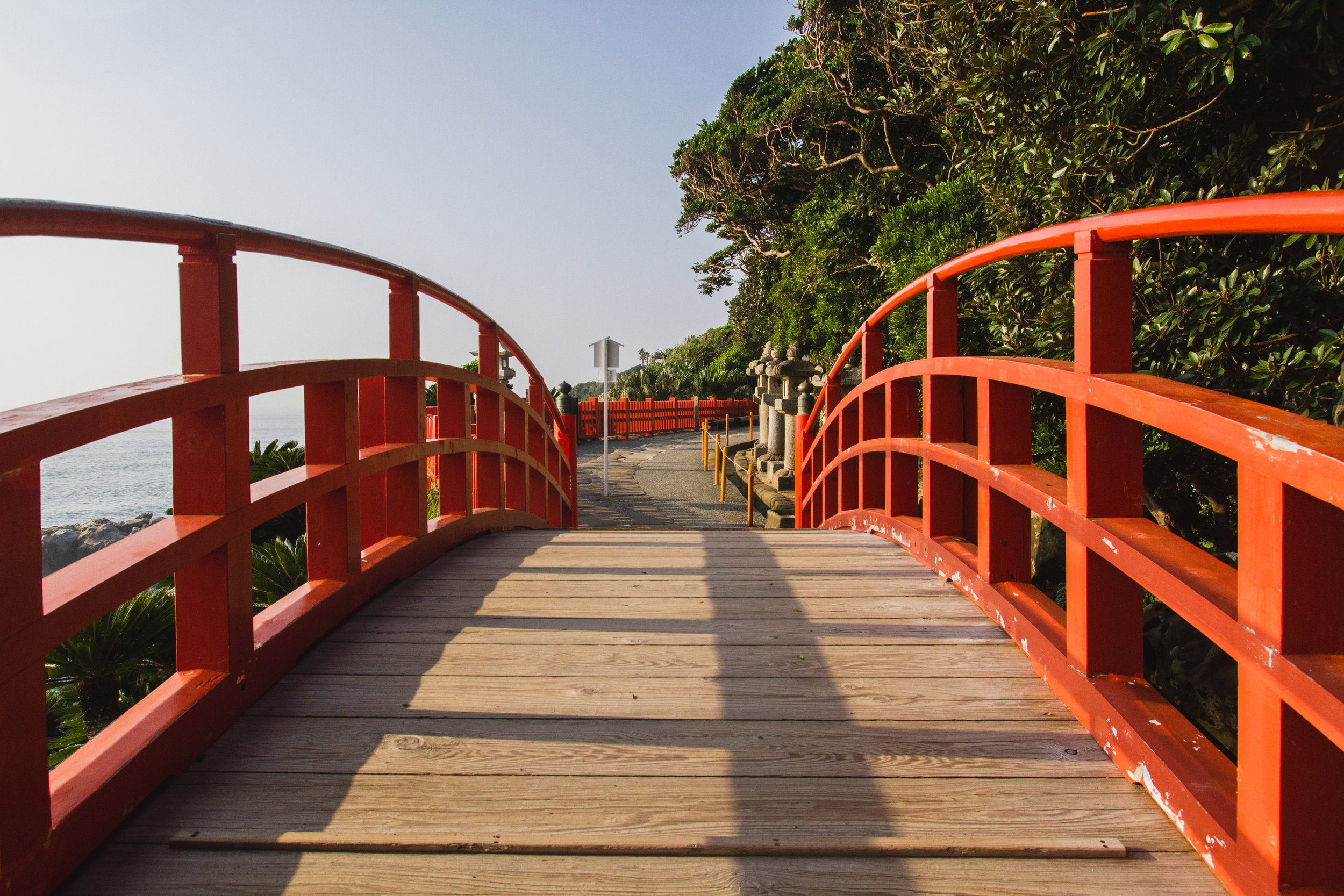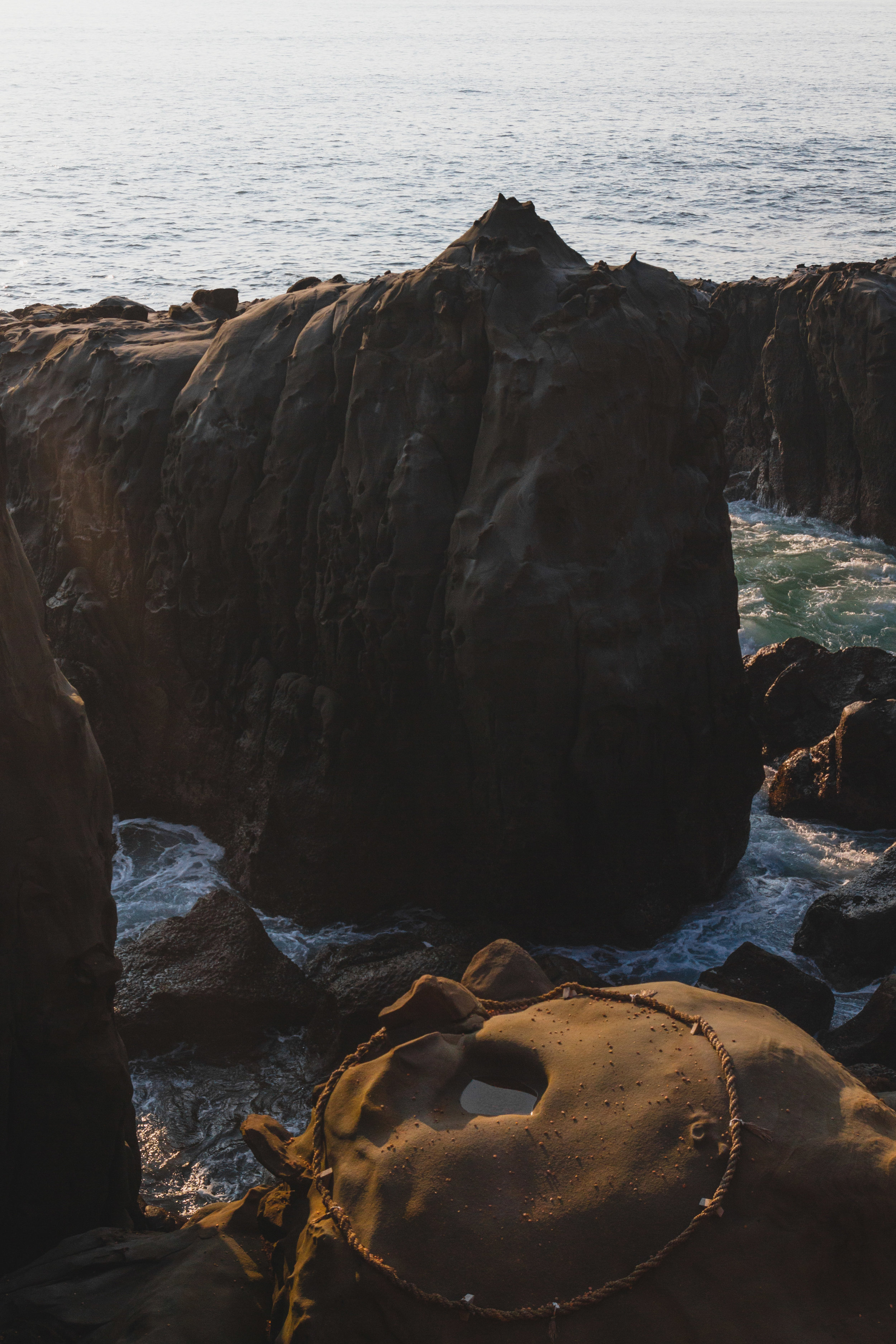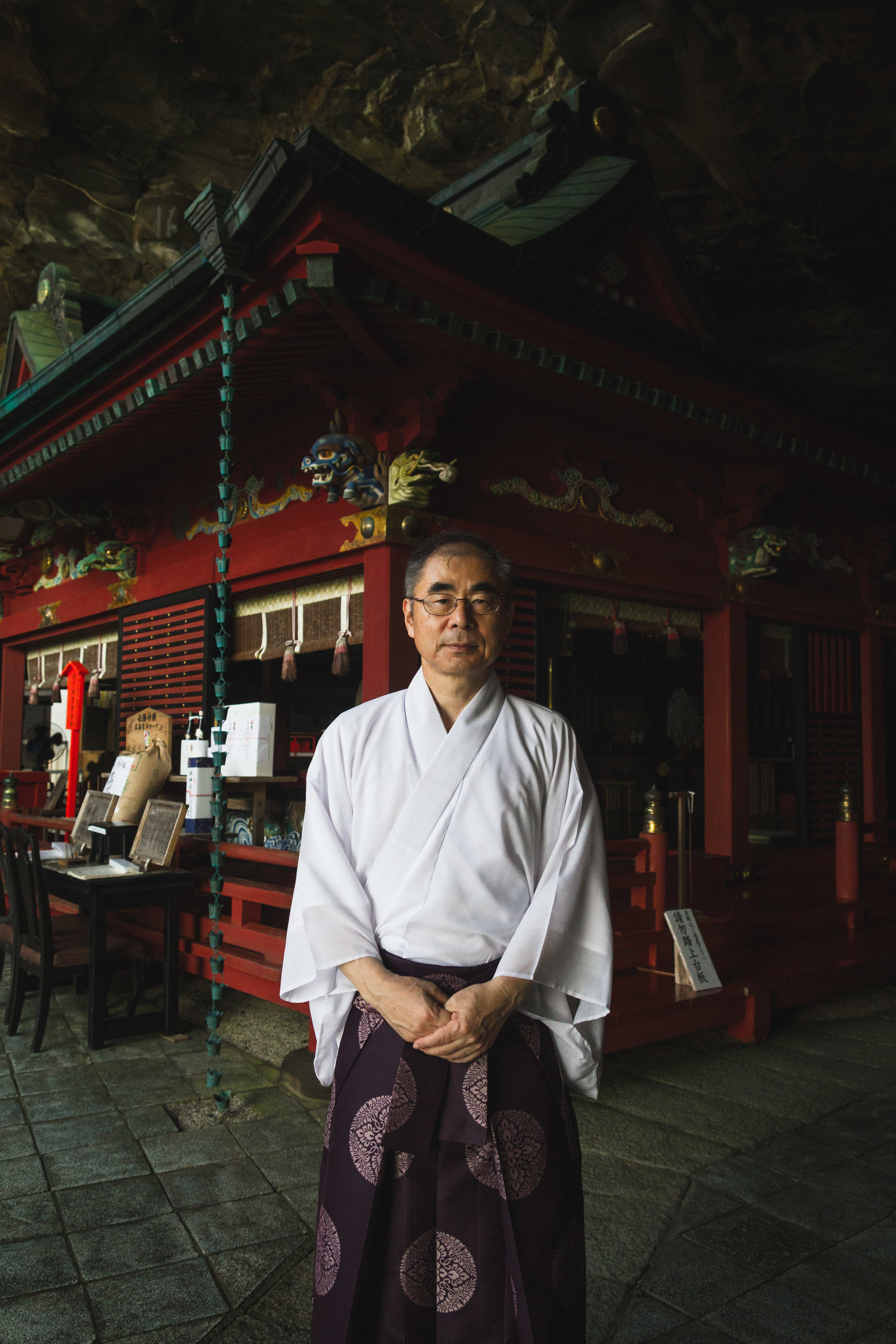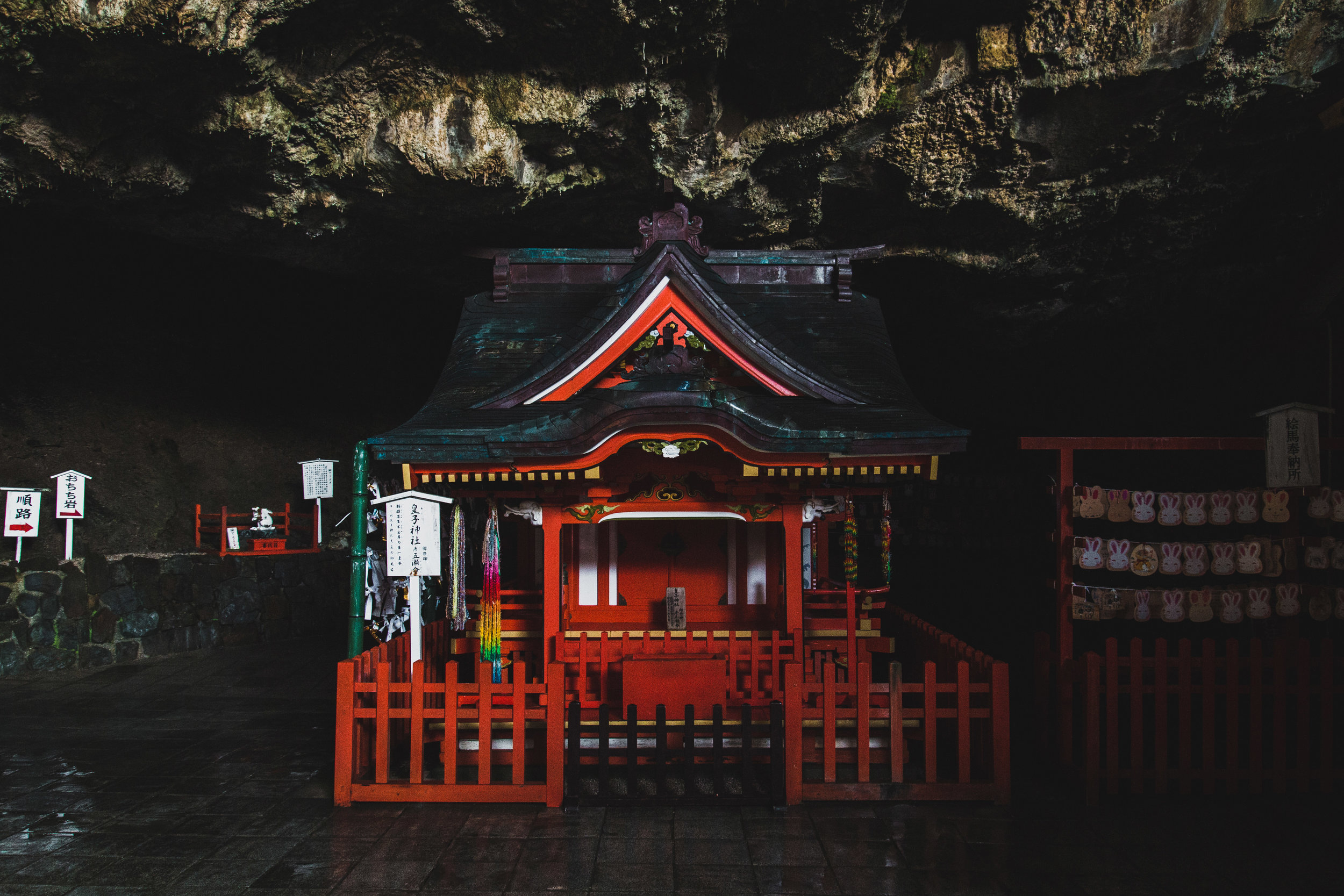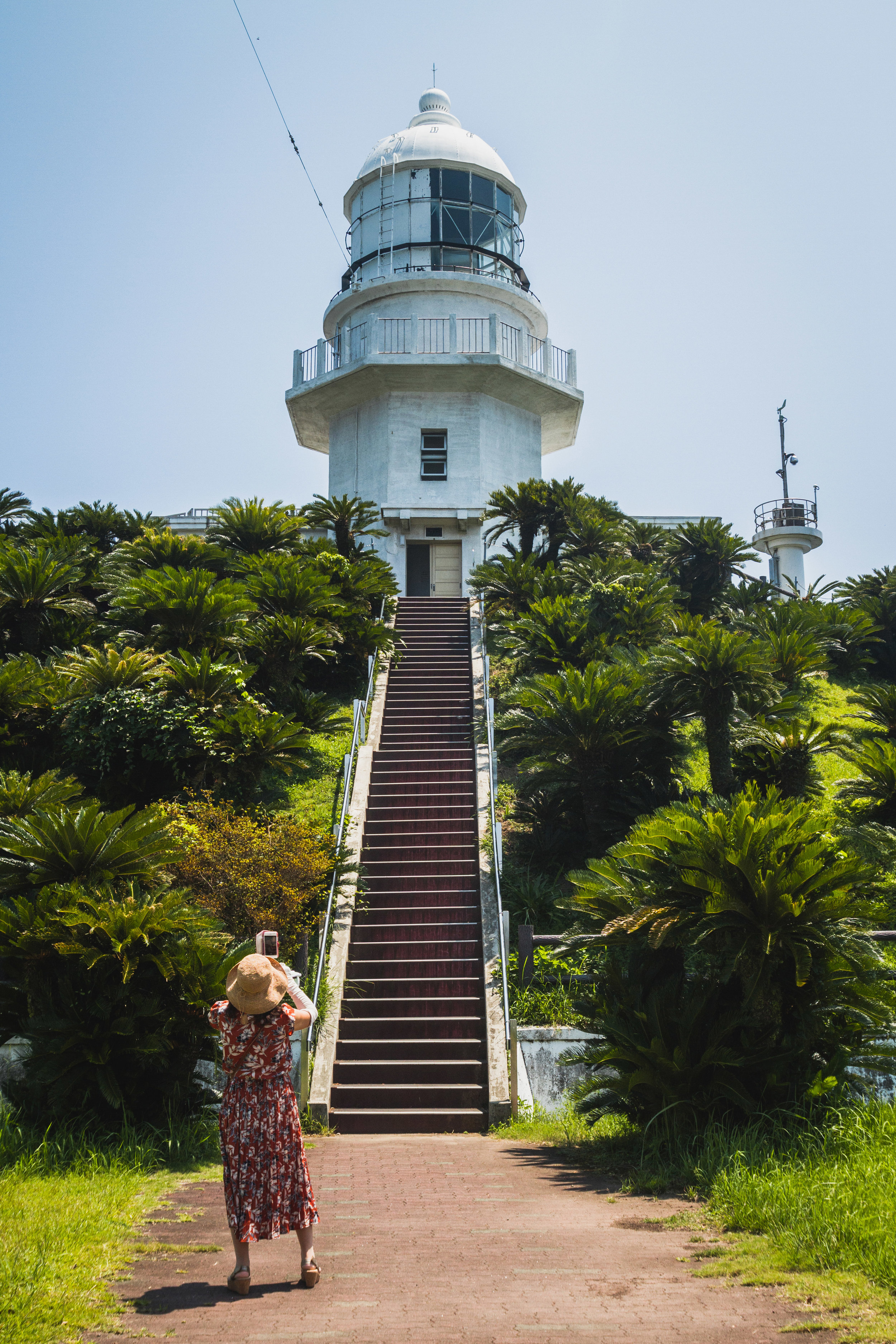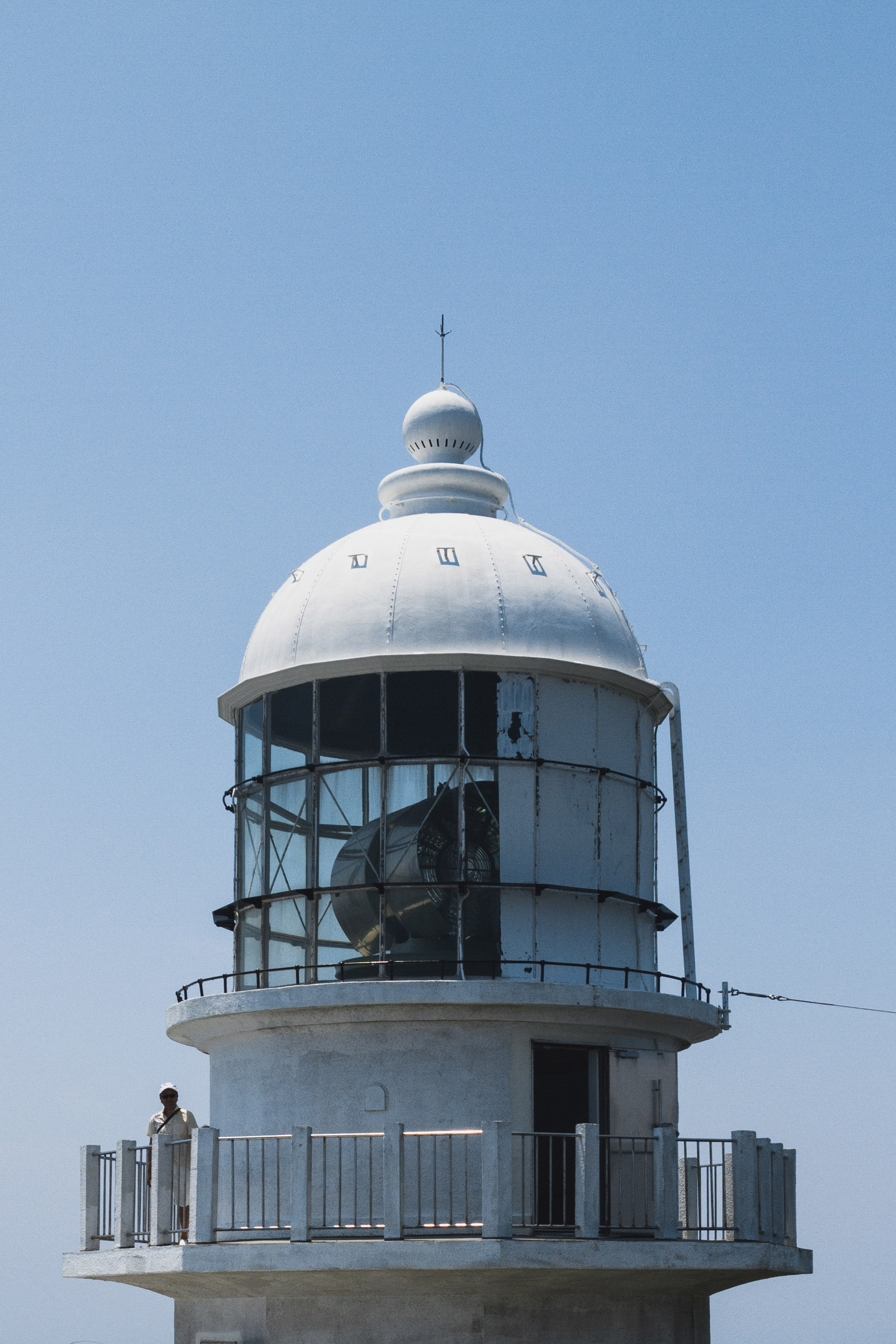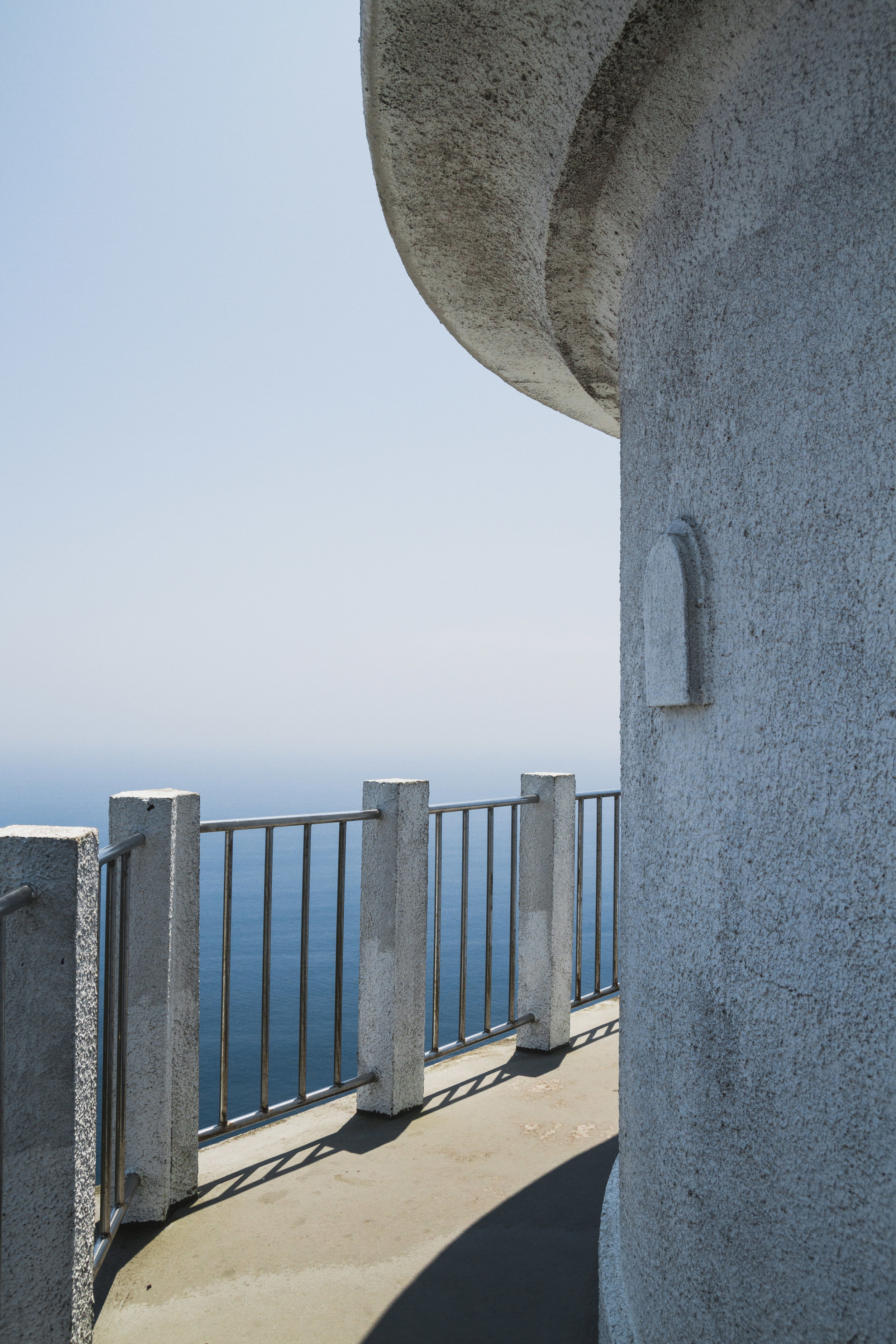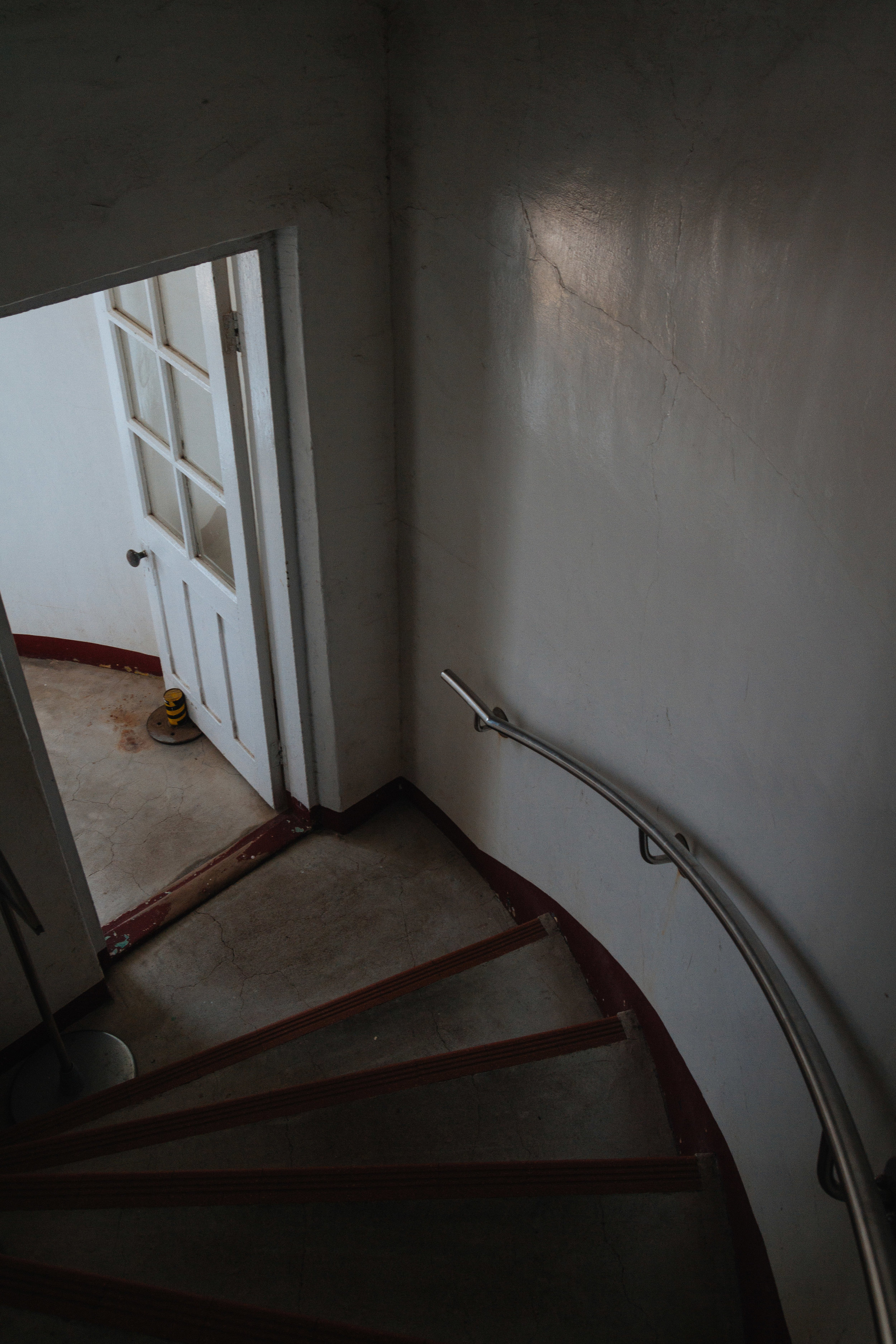Kyushu Calling: VOL 3
This post is part of a larger series that seeks to explore the island of Kyushu and some lesser known places in Japan.
Now that it’s well into autumn here, it seems like as good a time as any to get around to a few places I visited this summer. Right on schedule, I’m always a season behind.
Aoshima: Gone Honeymoonin’
Japan might not be the first place you think of when picturing the beach, but as an island nation it’s bordered on all sides by the sea, which results in some stunning oceanside gems. The Miyazaki Coast, which lies on the southeastern side of Kyushu, sees the country’s most temperate climate and is well known to locals as a surfing haven. Due to typhoon swells, this area has year round waves, with the warmest ones occurring from August to November. And on top of pristine waters, the backdrop to the sea is a one of impressive beauty–mountains rising and falling along the coast, long rows of palm trees and flora blooming all around, and some of the most vibrant sunrises and sunsets I have ever seen. As a result Miyazaki has become a hotspot for beach resorts and international surfing competitions.
While the numbers of visitors have wavered in the past few years, this area remains a lovely ocean paradise, especially during the sweltering heat of Japanese summers. Past an arcade of surf shops and food stalls, the white sand beaches of Miyazaki’s resort spots are rampant with vendors, selling anything from ice cream and mango smoothies (mangos are the official fruit of this prefecture) to floaties and inflatable animals. For those not wading in the warm waters, you could find most people picnicking under the resorts rows of umbrellas–pastel pops of color lining the beach, in perfectly uniform formation.
Just beyond the resort beaches lies Aoshima, a tiny island (only about 1.5 km in total) that was designated a national monument of nature back in 1934, and whose shrine is dedicated to the God of Matrimony. Crossing a bridge that connects the Aoshima to the mainland, you’ll get your first look at the bizarre rock formations that surround the island.
Oni no Sentakuita in Japanese, it is usually referred to to as “The Devil’s Washboards” or “The Ogre’s Washboards” depending on who you ask (the surfers I chatted with seemed to prefer Devil’s due to the scars it had given them.)
These repeating ridges create a surreal landscape, and it’s common to see figures wandering their jagged edges at low tide in search of shells or other seaside treasures.
The Aoshima shrine itself is small but vibrant, and the colorful building is frequented by married couples, newlyweds, and young couples, to pray for prosperity in their relationships. Just off of the main temple, through dense foliage, there is an even smaller shrine where visitors can purchase clay plates and throw them at a target for good luck. This area originally became popular for honeymooners due to local folklore concerning a royal son who dove deep into the waters in search of his brother’s fishing hook, and upon seeing the God the Sea’s daughter, he fell in love and married her. Additionally, in 1960’s two of Japan’s princesses spent their honeymoons here, bringing the Miyazaki coast nationwide attention as a prime spot for newlyweds.
Sun Messe: Statues and Selfies
Head further down the coast, and you’ll think you’ve been transported from Japan, to Easter Island. With the clusters of palm trees and the ocean as a panoramic background, Sun Messe operates as a laid back amusement park, with easy walking paths that wind uphill through gardens to various art installations, and Pepto-Bismol pink buildings that house rotating exhibits. The main attraction, however is its giant replica Moai figures.
A few decades ago, in response to a popular documentary about the Rapa Nui people, Japan took it upon themselves to restore the original statues, as a way to promote world peace. After three years of collaboration between the Tadano Corporation, the Nara National Research Institute for Cultural Properties, and the Institute for Easter Island Studies of the University of Chile, their successful restoration project on Easter Island achieved UNESCO World Heritage site status. So although this attraction seems falls under Japan’s penchant for gimmicky tourism and replicas (more on that in a later post) these imitation statues are instead meant to express gratitude for Japan’s involvement in the project. However, they certainly don’t hurt tourism in the area, and visitors come from all over Japan to take selfies with the serious, and ever mysterious monolithic statues.
Udo-Jingu: Lucky Rabbit
While I have spent the majority of my time in Japan on the island of Kyushu, I’ve managed to visit my fair share of temples and shrines between Tokyo, Kamakura, and Kyoto. Udo-jingu is unlike any other site I’ve been to, and I can confidently say it’s my favorite. Located in the southern part of the Miyazaki Prefecture, the site faces true east; for this reason, I made planned my second visit here to catch sunrise. The views did not disappoint.
Set into a cliffside cave along the Nichinan Coast, the beauty of this shrine are immeasurable. The bright colors of the fences and buildings at Udo-Jingu seem to almost vibrate against their blue ocean background; even when I arrived at 6 AM, with no other tourists in sight, the place was buzzing with energy. Visitors can make their way through an impressive gate at the entrance, and continue walking parallel to the sea, following vibrant red-orange fences toward the caves. Scattered along the path you’ll find numerous rabbit statues; the Udo shrine has a close relationship with the rabbit, which is said to bring tidings of good luck, promotion, and even healing. This shrine even hosts a festival annually, celebrating the rabbit during the first day of February, which the Rabbit month according to the Chinese Zodiac.
Beyond a small arched bridge, visitors descend a long flight of steep stairs towards the caves, and a terrace overlooking the rocky ocean below. The main shrine itself is set back into the cave, though even in the early morning light there is enough sun to illuminate its brilliant colors and exquisitely carved designs. Aside from its association with rabbits, young couples and newlyweds often pilgrimage here to see the breast-shaped rocks along the cave wall, which are said to have nourished the famous Emperor Jimmu as a baby. It is believed that drinking the water that drips from these rocks will bring fortune in pregnancy, childbirth, nursing, and for those women wishing to bear children in the future. Those visiting can also purchase a lucky ceramic stone (called an undama) at the shrine, which is then thrown at a target on the rocks below the ocean view terrace for good luck.
While I didn’t try my hand at the undama throwing, or sip from the cave walls (pregnancy is not currently high on my to-do list haha,) the sense of wonder surrounding this shrine is hard to deny. I wandered around for the better part of an hour by myself (it seems sunrise on a Tuesday was a bit too early for your average tourist) and eventually the man overseeing the site ushered over to me. Through a translated guide pamphlet and some broken English he described the importance of the shrine, the dripping walls, the rabbit. After a short tour, he then gifted me a small souvenir for good luck, and in return I asked to take his portrait. I don’t have much for language when it comes to speaking Japanese but being able to ask people if I can take their photo is something I’m grateful to have acquired.
Cape Toi: Wild Horses Meet Wes Anderson
Head further south still, and as the cliffs begin to rise up from the shore and the road starts to twist into what feels like impossibly narrow curves, you’ll reach Cape Toi. The southernmost cape of the Miyazaki Prefecture, this area is popular for its breathtaking drop-offs (250 m at some points,) its charming candela lighthouse, and its wild horses. Known as Miyazki-uma, this rare breed is said to be descendants of samurai army horses. The story goes that around 300 or so years ago, samurais in the Takanabe area released their horses to graze, and when never collected, the animals soon turned wild. This is one of the only areas in Japan where wild horses exist and can be seen living and roaming freely. While the animals spend most of their time shifting from one grazing area to the next, combined with sweeping views of the sea, and the indigenous Sago palm trees, they maintain some of their majesty.
I feel it’s an analogy I use far too often, but the Cap Toi lighthouse could have easily found itself in a Wes Anderson movie. I half expected to find myself in the Japanese rendition of Moonrise Kingdom. Accessible by a steep set of stairs, and bookended on either side by bursts of palms, this light blue structure tops the cliff it sits on like a quirky birthday candle. Looking out from the lighthouse’s balcony though, charm quickly turns to awe. The deep blue of the Pacific stretches out for miles and miles, until it disappears almost seamlessly into the horizon, while the sun fractures its way across the rolling waves below. It’s almost disorienting in scale, and the size of what lies before you is felt just as much as it is seen.
Till next time (and VOL 4) ✌🏻


